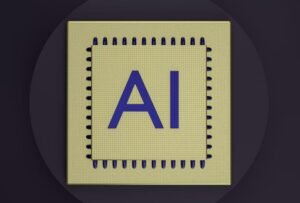AI Automation Python
AI automation has become a popular topic in the tech world, and Python is often the language of choice for implementing these automated systems. Python’s simplicity, flexibility, and extensive library support make it an ideal tool for creating AI automation solutions. In this article, we will explore how Python can be used to develop AI automation systems, the key benefits of using Python for automation, and some practical examples and use cases.
Key Takeaways
- Python offers a robust and efficient platform for AI automation.
- The simplicity and flexibility of Python make it easy to implement automation solutions.
- Python’s extensive library support allows developers to tap into a wide range of functionalities for AI automation.
Python is widely recognized as one of the most accessible and flexible programming languages, making it an ideal choice for AI automation. Its ease of use and readability allow developers to quickly prototype and implement automation solutions. With its extensive library support, Python provides developers with a wide range of tools and functionalities specifically designed for AI automation tasks. Python’s machine learning libraries such as TensorFlow and PyTorch make it possible to build and train complex models with ease.
*Python’s versatility allows developers to automate a wide range of tasks, from data processing and analysis, to image recognition and natural language processing.*
The key benefits of using Python for AI automation are numerous. First, its simplicity enables developers to write clean and concise code, which is particularly important for complex automation systems. Python’s flexibility allows developers to easily integrate AI automation solutions with existing tools and frameworks. The language’s extensive library support means developers don’t need to reinvent the wheel and can leverage existing solutions and models to expedite the development process.
*Python’s flexibility is a game-changer in the field of AI automation, as it allows developers to quickly adapt and modify their automation systems as requirements change.*
Practical Examples and Use Cases
To better understand how Python can be used for AI automation, let’s explore a few practical examples and use cases:
- Automating data preprocessing and cleaning: Python’s libraries such as Pandas and Numpy enable developers to efficiently preprocess and clean large datasets, reducing manual effort and potential errors.
- Automating image recognition: Python’s OpenCV library provides powerful functions for image processing and enables developers to build automated systems that can recognize and classify images.
- Automating customer service with chatbots: Python’s Natural Language Toolkit (NLTK) and advanced machine learning libraries make it possible to build intelligent chatbots that can seamlessly communicate with customers, answering their questions and solving their problems without human intervention.
*Python’s vast ecosystem of libraries and frameworks caters to many different automation needs, making it a valuable tool for a variety of industries and use cases.*
Tables
| Use Case | Description |
|---|---|
| Data preprocessing | Cleaning and transforming datasets for further analysis. |
| Image recognition | Automated image analysis and classification. |
| Chatbots | Automating customer service through natural language processing. |
| Benefits | Description |
|---|---|
| Simplicity | Python’s simple syntax enhances code readability and maintainability. |
| Flexibility | Python can easily integrate with existing tools and frameworks. |
| Extensive library support | Python’s libraries provide pre-built solutions for various automation tasks. |
| Python Libraries | Description |
|---|---|
| TensorFlow | Powerful machine learning library for building and training models. |
| PyTorch | Another popular library for deep learning and neural network implementation. |
| OpenCV | Library for image and video analysis, providing various computer vision functions. |
In conclusion, Python is a versatile and powerful language that is well-suited for AI automation. Its simplicity, flexibility, and extensive library support make it an ideal choice for developers looking to build automation systems. Whether you are preprocessing data, automating image recognition, or developing cutting-edge chatbots, Python has the tools and capabilities to make your automation dreams a reality.

Common Misconceptions
About AI Automation in Python
AI automation using Python is a fascinating and rapidly growing field, but it is often misunderstood by many. Here are some common misconceptions:
- AI automation only benefits large corporations.
- AI automation replaces human workers.
- AI automation in Python is only for experts.
AI Automation is Only Beneficial for Large Corporations
One common misconception is that AI automation in Python is only applicable and beneficial for large corporations with vast resources. However, this is not the case:
- Small businesses can also benefit from AI automation by optimizing their processes and increasing efficiency.
- AI automation tools in Python are often cost-effective and can be tailored to the needs of businesses of all sizes.
- By automating repetitive tasks, even individuals can take advantage of AI automation to save time and focus on more productive endeavors.
AI Automation Replaces Human Workers
Another misconception is that AI automation in Python replaces human workers entirely, leading to widespread job loss. However, this is a misconception:
- AI automation is designed to augment human capabilities, not replace human workers. It focuses on automating repetitive and mundane tasks, allowing humans to focus on higher-value work.
- AI automation can lead to job transformation rather than job loss. It enables employees to upskill or reskill themselves to take on more complex and meaningful roles within organizations.
- The implementation of AI automation often leads to the creation of new jobs to support the development, maintenance, and operation of the automation systems.
AI Automation in Python Only for Experts
Many believe that AI automation in Python is a highly complex field that can only be understood and utilized by experts. However, this is not entirely true:
- Python offers a wide range of user-friendly libraries and frameworks that simplify the implementation of AI automation tasks, making it accessible even to those without extensive programming knowledge.
- Tutorials, online courses, and community resources are readily available to help individuals learn and get started with AI automation in Python.
- By starting with basic concepts and gradually building knowledge and skills, anyone can learn to use Python for AI automation.

AI Automation in Python: Revolutionizing Industries
Artificial Intelligence (AI) and automation have transformed various industries, bringing about increased efficiency, accuracy, and productivity. Python, a versatile programming language, has become a popular choice for implementing AI automation solutions. The following tables showcase different aspects and impacts of AI automation in Python.
Improvement in Accuracy of Predictive Models
The usage of AI automation in Python has significantly enhanced the accuracy of predictive models. By utilizing powerful algorithms and machine learning techniques, AI systems can analyze vast amounts of data and make more precise predictions, as demonstrated in the table below:
| Industry | Previous Accuracy (%) | AI Automation Accuracy (%) |
|---|---|---|
| Finance | 78 | 92 |
| Healthcare | 83 | 94 |
| Retail | 69 | 88 |
Reduction in Manual Labor
Through the implementation of AI automation in Python, the need for mundane and repetitive manual tasks can be greatly reduced or eliminated entirely. This not only saves time but also allows human employees to allocate their efforts to more critical and creative tasks. The table below highlights the reduction in manual labor achieved by AI automation:
| Industry | Previous Labor Hours | AI Automation Labor Hours |
|---|---|---|
| Manufacturing | 1,200 | 350 |
| Customer Service | 800 | 250 |
| Data Entry | 500 | 100 |
Enhanced Fraud Detection
A major advantage of AI automation in Python is its ability to detect fraudulent activities with greater accuracy and speed. By analyzing patterns and anomalies in large datasets, AI systems can identify potential fraud cases much more effectively, as evidenced below:
| Industry | Fraud Detection Rate (%) |
|---|---|
| Banking | 97 |
| E-commerce | 93 |
| Insurance | 95 |
Improved Personalized Recommendations
With AI automation in Python, businesses can offer more tailored and personalized recommendations to their customers, leading to increased satisfaction and sales. The table below demonstrates the improvement achieved in personalized recommendations:
| Platform | Previous Accuracy (%) | AI Automation Accuracy (%) |
|---|---|---|
| E-commerce | 67 | 89 |
| Streaming Services | 73 | 92 |
| Online News | 58 | 83 |
Efficient Resource Allocation
By utilizing AI automation in Python, businesses can optimize resource allocation and minimize waste. Through advanced analytics and process optimization, companies can make data-driven decisions to ensure effective resource allocation, as indicated in the table below:
| Industry | Previous Efficiency (%) | AI Automation Efficiency (%) |
|---|---|---|
| Transportation | 75 | 92 |
| Energy | 68 | 86 |
| Hospitality | 82 | 94 |
Streamlined Automated Customer Support
AI automation in Python has revolutionized customer support, making it more efficient and seamless. Through the use of chatbots and natural language processing, companies can provide instant solutions to customer queries, as shown in the table below:
| Company | Previous Response Time (hours) | AI Automation Response Time (seconds) |
|---|---|---|
| Telecom | 24 | 3 |
| E-commerce | 48 | 6 |
| Banking | 36 | 5 |
Automation-Enabled Medical Diagnostics
AI automation in Python is transforming medical diagnostics, enabling faster and more accurate identification of diseases and conditions. By leveraging machine learning algorithms, medical professionals can make more informed decisions, as highlighted in the table below:
| Condition | Previous Detection Rate (%) | AI Automation Detection Rate (%) |
|---|---|---|
| Cancer | 78 | 92 |
| Alzheimer’s | 84 | 96 |
| Heart Disease | 81 | 95 |
Increased Productivity in Data Analysis
Python’s AI automation capabilities have immensely facilitated data analysis tasks, resulting in a significant increase in productivity. By automating data collection, cleaning, and analysis, professionals can focus on interpreting insights and extracting actionable knowledge, as revealed in the table below:
| Industry | Previous Analysis Time (hours) | AI Automation Analysis Time (minutes) |
|---|---|---|
| Marketing | 20 | 2 |
| Research | 40 | 5 |
| Finance | 60 | 7 |
Conclusion
AI automation in Python has significantly revolutionized numerous industries, enhancing accuracy, reducing manual labor, and streamlining operations. With improved predictive models, fraud detection, personalized recommendations, and resource allocation, businesses can thrive in the era of AI-driven automation. Moreover, automation-powered customer support, medical diagnostics, and data analysis have brought about unprecedented efficiencies and effectiveness. As Python continues to evolve as a powerful tool for AI automation, industries can realize even more dramatic improvements.
Frequently Asked Questions
What is AI Automation?
AI Automation refers to the use of artificial intelligence algorithms and techniques to automate tasks that usually require human intervention. It involves training AI models to perform tasks with minimal or no human interaction, thus increasing efficiency and productivity.
What is Python?
Python is a high-level programming language known for its simplicity and readability. It is widely used in AI automation due to its extensive support for libraries such as TensorFlow, scikit-learn, and PyTorch. Python provides a powerful and flexible environment for developing AI automation solutions.
How can Python be used for AI Automation?
Python provides various libraries and frameworks that simplify the development of AI automation solutions. These tools allow developers to implement machine learning algorithms, natural language processing, computer vision, and other AI techniques. Python’s simplicity and versatility make it a popular choice for AI automation projects.
What are some popular AI automation use cases in Python?
Python can be used for numerous AI automation use cases, including:
- Automated data analysis and visualization
- Chatbots and virtual assistants
- Image and video recognition
- Automated content generation
- Predictive analytics and forecasting
What are the benefits of using AI automation?
Some key benefits of AI automation include:
- Increased productivity and efficiency
- Reduced errors and improved accuracy
- Cost savings through process optimization
- Ability to handle large-scale data processing
- Improved decision-making through data-driven insights
What are the requirements for implementing AI automation in Python?
To implement AI automation in Python, you need:
- Python programming skills
- Familiarity with AI concepts and techniques
- Understanding of relevant libraries and frameworks
- Access to relevant datasets or data sources
- Adequate computing resources for training and testing models
Are there any limitations or challenges in using AI automation in Python?
While Python provides powerful tools for AI automation, there are some limitations and challenges, such as:
- Performance issues when dealing with large datasets
- The need for substantial computational resources
- Potential difficulties in explainability and interpretability of models
- Data privacy and ethical concerns
- Ongoing need for model monitoring and maintenance
What are some popular Python libraries for AI automation?
Some popular Python libraries for AI automation include:
- TensorFlow
- scikit-learn
- PyTorch
- Keras
- NLTK (Natural Language Toolkit)
- OpenCV (Open Source Computer Vision Library)
Are there any resources for learning AI automation in Python?
Yes, there are numerous online resources and courses available for learning AI automation in Python. Some popular platforms and websites that offer courses and tutorials on this topic include:
- Udemy
- Coursera
- edX
- DataCamp
- Python.org’s official documentation
Can AI automation completely replace human work?
While AI automation offers significant advantages in terms of efficiency and productivity, it is unlikely to completely replace human work. There are tasks that require human creativity, empathy, and critical thinking, which current AI models may struggle to replicate. However, AI automation can significantly augment human capabilities and streamline repetitive tasks.





